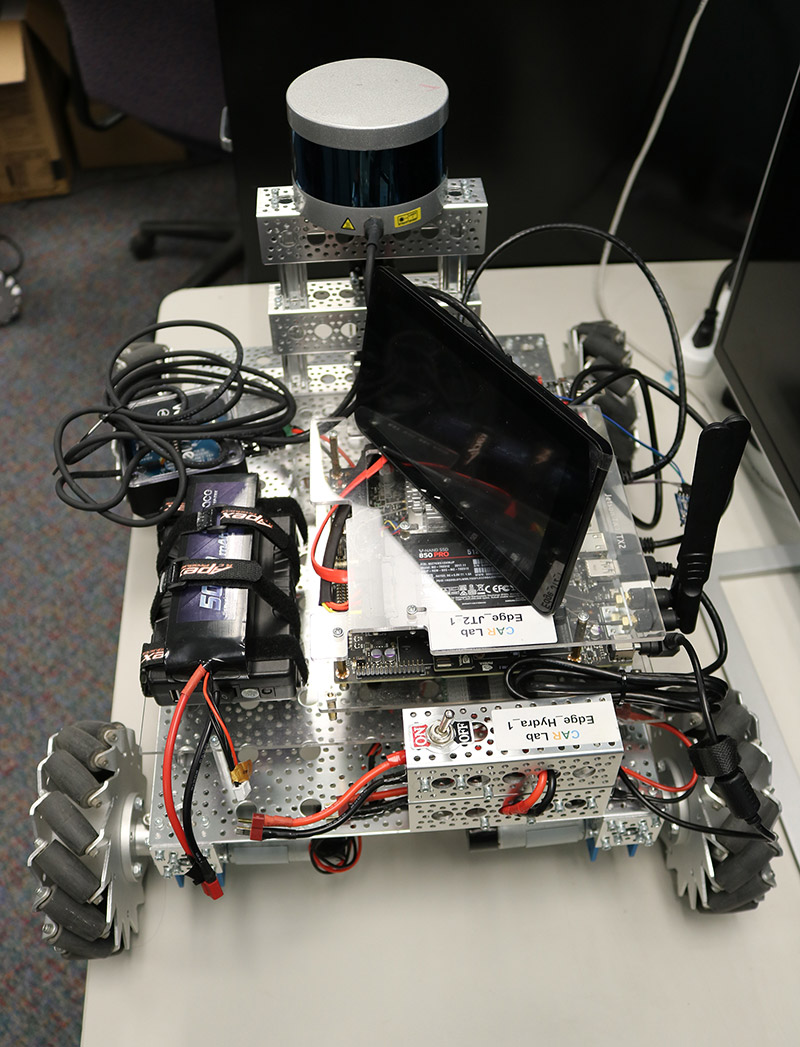Wayne State introduces HydraOne platform to open source as need for edge computing research in autonomous transportation grows
As sensors, wireless communications and machine learning technologies continue to evolve, it is becoming more evident that the development of connected and autonomous vehicles (CAV) is a data-driven venture. Intel estimates that an autonomous car will generate four terabytes of data each day.
Since most of this data needs to be processed in real time within the CAV network, these vehicles essentially become edge computing systems. Edge computing brings computation and data storage closer to the locations of devices and people producing and consuming information, lowering bandwidth and response times.
Research in the edge computing domain of CAVs is challenging due to a lack of real-world environments through which experiments can be conducted and the often cost-prohibitive nature of hardware construction or software debugging. To address these challenges, researchers in the Wayne State University Connected and Autonomous Driving Laboratory - led by Weisong Shi, professor of computer science and associate dean for research in the College of Engineering - have proposed HydraOne, an indoor experimental research and education platform for CAVs.

HydraOne is a small, low-cost but fully functional CAV development tool equipped with a chassis power system, visual sensors, voice control, and computing and communications systems - basic components to support deployment of intelligent connected vehicle research. Recently, Shi's team responded to interest from academia and industry by making HydraOne an open-source project.
According to Shi's team, HydraOne has three key characteristics: design modularization, resource extensibility and openness, and function isolation. These traits allow each module to be tested and updated independently and permit users to modify functional components to fit their own research needs.
"HydraOne fills the existing gap in the research of the connected and autonomous driving community perfectly by allowing researchers to focus on algorithm design and optimization, and test and validate their outcomes," said Shi. "HydraOne is also a perfect platform to educate the next generation of workforce in the CAV space, which is an urgent need."
The computing system collects and processes sensor data in real time, and data output transmitted to the chassis controls speed and direction, enabling HydraOne's autonomous driving capability. The device is also equipped with three communication modes - WiFi, DSRC and LTE - to communicate with cloud and edge servers, facilitating research in vehicle-to-everything (V2X) communication systems that contribute to CAVs' enhanced safety, security and efficiency.
Wayne State University has launched a new graduate course in the College of Engineering centered on the HydraOne platform, which teaches algorithms and systems for intelligent connected cars. A number of other research projects based on HydraOne experimentation have also been developed. Shi envisions HydraOne as a gateway to incorporating more hands-on experiences into the developing curricula for the Center for Advanced Mobility.